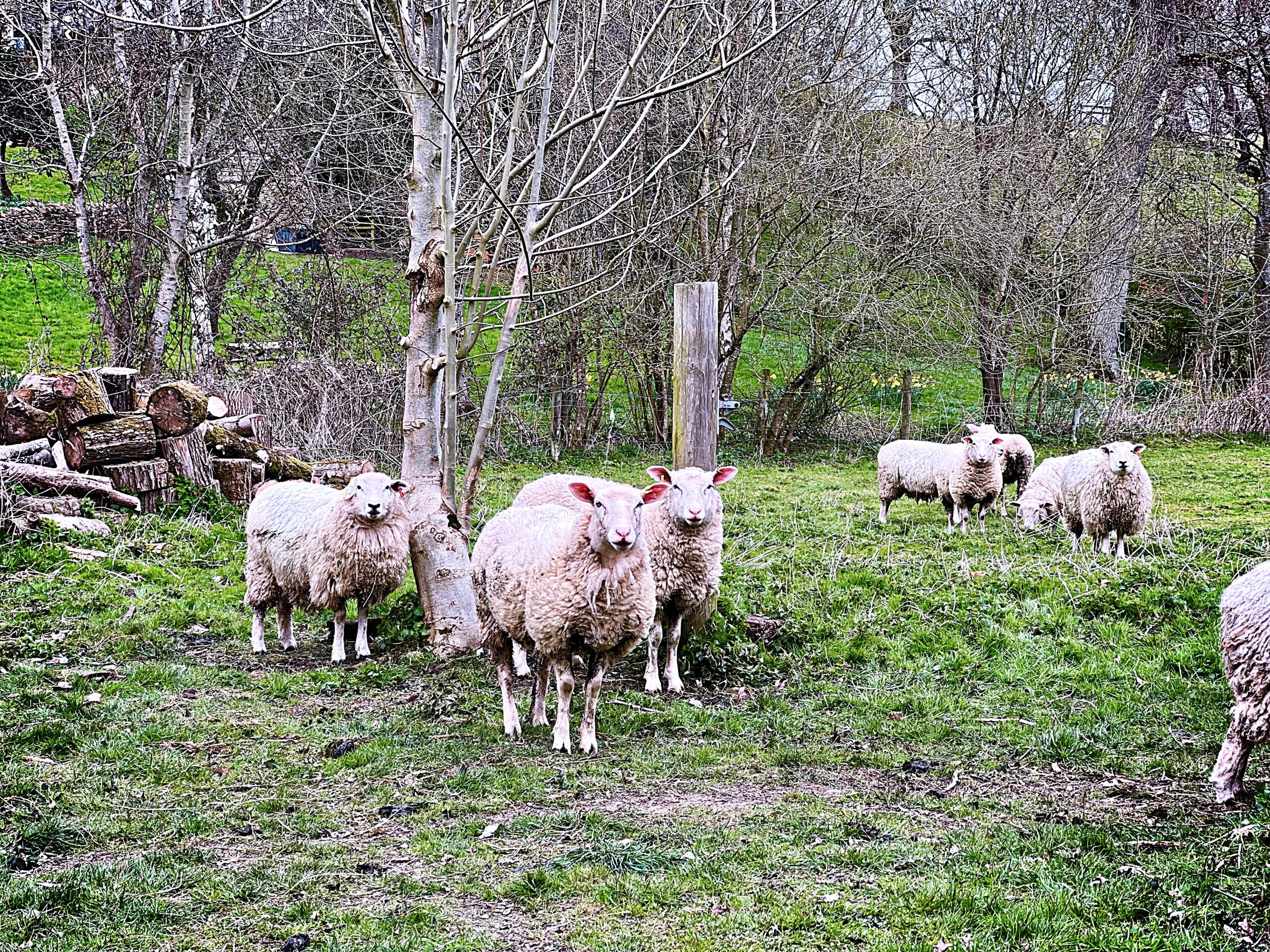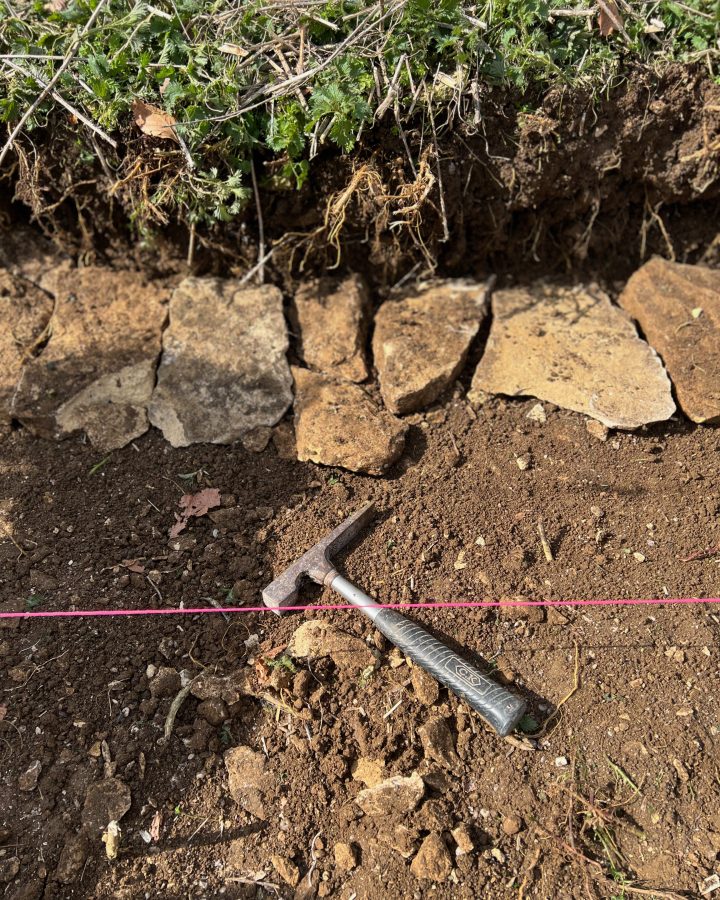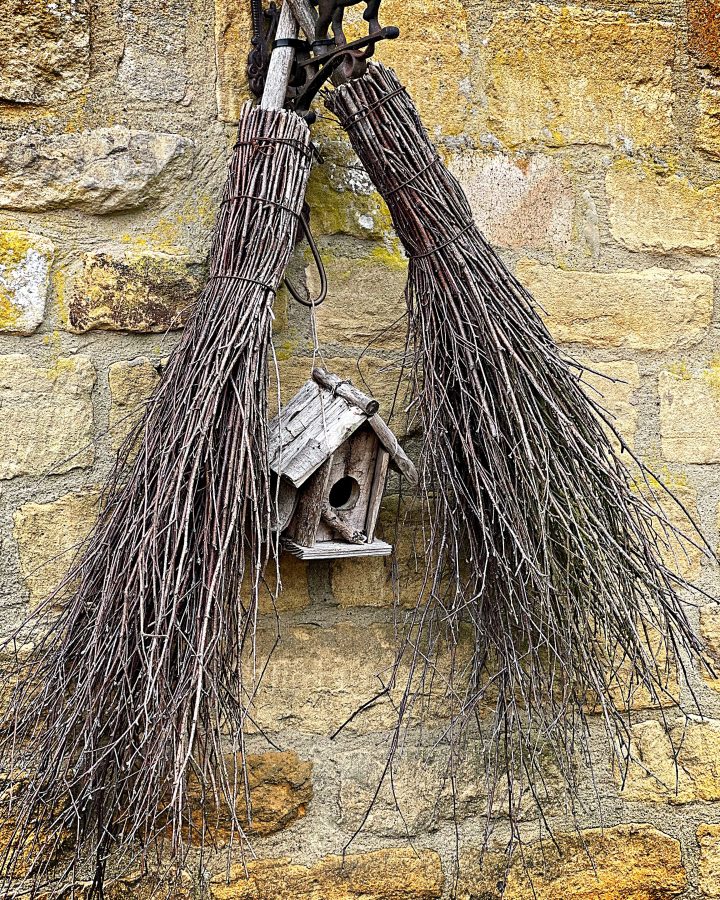
People in the Cotswolds area of England like to remain mysterious. They don’t want you to find where they are. Twice I struggled to find addresses: the cottage where I stayed and the dry-stone walling course I was supposed to attend.
It doesn’t help that there is no signal outside of cities. You end up parked in the middle of a country lane, squinting at your phone which has half a bar, dealing with the foibles of Google maps, desperately trying to find someone local to ask directions. Most walkers are tourists and haven’t the foggiest where they are either.
I drove up and around Hawling village three times looking for a cottage called The Coach House. Eventually I spotted a local who pointed at a stone gate with the faint words chiselled – Old Rectory. The gate opened and inside was a complex of three or four houses, all honeyed limestone and fluorescent yellow daffodils against unfeasibly green grass. Which one is The Coach house? I found a house with the keys in the door and ventured inside, Goldilocks-style. It was beautiful. Huge arched windows, a log fire, a tiny stained glass window with sheep painted on, cosy bedrooms with fluffy cloud duvets, a green-painted ships’ desk.
The first night struggling to light the log fire, we found a black crow hanging upside down in the chimney. This added a slight Edgar Allen Poe vibe to the evening. ‘It must have been blown down by the recent storm’ explained the housekeeper.
The Cotswolds is chocolate-box charming. No wonder Americans think England is a theme park. Everywhere you turn there is an instagram-worthy view, hashtag #cottagecore. At the end of the garden, two horses wearing winter coats wandered past a shepherd’s hut reminiscent of David Cameron’s famous hut where he wrote his post-Brexit flounce autobiography. Everyone in the Cotswolds has a £35,000 Shepherd’s hut.
It snowed every day, possibly not the best weather to build a dry-stone wall. The two-day course is designed to hone rural skills. A dry-stone wall is like a jigsaw of stone, held up by architecture and engineering.
‘To put cement in a dry-stone wall is a mortal sin’ grumbled our teacher Richard Gray. A mortar sin even, I pondered. ‘The stone can’t breathe with cement. The wall won’t last’.
‘It’s the most expensive boundary in the world; £300 a square metre’ he continued. This is an appropriate place to learn this skill; Cotswolds stone is a gorgeous pale gold colour. Since the 18th century, dry-stone walls have stood all over the region, a patchwork of wind breaks and enclosures.
To reach the dry-stone walling lesson was an obstacle course. The location, Notgrove Estate, didn’t exist on Google maps. Then I noticed the postcode was slightly different so I drove there. Nothing, nada, no sign. I’d gone on holiday by mistake, lost in England.
I downloaded the app What3words, a new way of locating addresses. This took me down a dirt track, fearing for the underside of my Fiat 500. Some dog walkers told me that another guy was also barrelling around looking for the course. Further up the lane, I saw a car backing up.
I got out and talked to the driver. ‘Yes I’m on the course too, I’ve had to reverse back for a mile.’ What3words led us to a field with a very long dry-stone wall.

Driving through several fields, we found our group. They were taking down the old broken wall and sorting the rocks into piles. Face stones have one green side, they are used for the front or the back. Pin stones are smaller, rubble like, they go in the middle of the wall. Foundation stones go at the bottom, spread over the two foot width of the wall. Coping stones are large and poke vertically from the top.
After several hours of moving stones out of the way, in biting cold, I did start to feel a little bit like I was in a prison chain-gang. And people pay to do this? I muttered to myself.
A plumb line was strung up denoting the front, the back and the height. There were too many of us for the short length of wall. When it came to building it back up again, I found every time I put a stone in place, someone else would move it. I felt disheartened. In the end I stuck to pouring the rubble in the middle.
I wore gardening gloves but I wish I’d bought knee pads: kneeling on stinging nettles was harsh.
Miraculously a wall was beginning to form, layer by layer. Just the act of sorting out flat stones and laying them (tilting slightly forwards, with pinning stones wedged in at the back)created a strong wall. If the stone had a bump which prevented it from fitting in with the puzzle, you’d use a hammer to tap gently along the grain of the stone to smooth it out.
Dry-stone walling isn’t about brute strength, Richard explained, in fact women are very good at it. ‘You want to treat the stone like glass. When you know what you are doing, you don’t need gloves. But I want you to wear gloves because creatures live within the wall: frogs, snails, stoats, lizards and they leave residue and excrement. If you get that on your hands and then eat your sandwich (we had to bring packed lunches), you’d be very ill.’
At lunch time I was grateful I’d driven through the field. All of us separately sat in our cars and ate our sandwiches. It was very cold and we were glad to sit down out of the wind.
Have you ever had a celebrity on the course? I asked Richard. He thought deeply: ‘not really but I did do a quote for Kylie Minogue, she wanted a wall all around her house.’
On the second day I woke early, wrapping up even warmer. I tried the What3words app which lead me to somewhere completely unrecognisable. I simply couldn’t find the course. As I said, people in the Cotswolds like to be enigmatic.
Instead I spent the day wandering around the picturesque villages of Lower and Upper Slaughter, and Bourton on the Water. Top tip: don’t expect to get in for Sunday lunch anywhere without booking, it’s impossible.
I rented the Coach House in Hawling from Cotswolds Hideaways. From £750 to £1000 for three nights, sleeps six.
You can find courses all over the UK with the Dry Stone Walling Association. This course cost £99 for two days.



Okay, which one do you want to live in?





























Have to say how much I admire your adventurous spirit and tenacity ,
How odd not to be able to find anywhere by satnav. How is he going to run a course? More fun photographing the charming cottages.
How intrepid you are! Super impressed. Glad you did in the ‘soft south’ as Cumbria, where I am from, is the weather less clement. For less clement read rain and a lot of it,
Technically I have to say that Cumbrian dry walling is far superior than any other … any where!
LOL
I’ll take your word for it!
What a delightful recount of the quintessential Cotswolds experience! The challenges of navigating the idyllic, yet mysterious, countryside add to the charm, don’t they? From the picturesque stone cottages to the intricate art of dry-stone walling, this post beautifully captures the essence of rural England. The imagery of the snow-dusted landscape, the convivial local encounters, and the rewarding effort of wall building paint a vivid picture of a quintessentially British adventure. Quite the adventure, indeed!
Amazing AI prose!